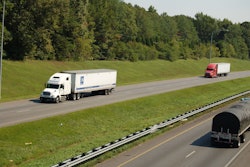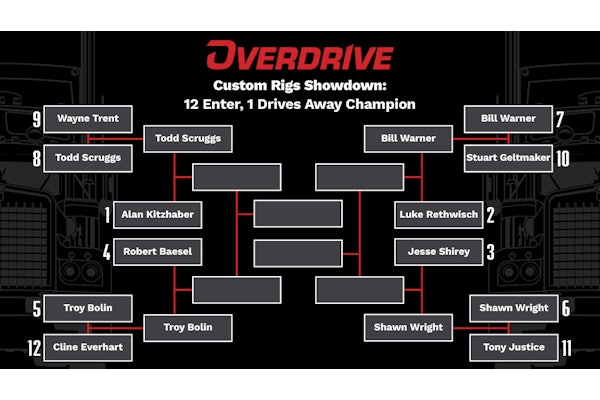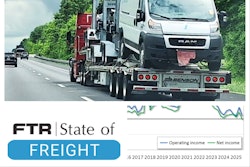A few thoughts today on the Work Truck Show, which wrapped up Friday in Indianapolis.
Even though a late-season snowstorm fouled travel up a bit, the show was well-attended and the overall attitude was upbeat. The sense is that the economy is, in fact, recovering. It’s not recovering as fast as anyone would like. But things are getting better.
At its press conference to unveil the new Transit van, Ford noted that the average age of commercial vehicles in the U.S. now is 11 years old. A lot of fleets (and private owners) have been hanging on to their vehicles while the economy sorted itself. And combined with the sluggish recovery, it seems to indicate that a lot of people are soon going to be looking to purchase new vehicles.
Beyond that, here are a few take-aways:
The days of the Scoobie-Doo “Mystery Machine” van are numbered. For years, we’ve seen stutter-steps from manufacturers who want to consolidate their design, production and supply chain capacities by introducing global vehicle platforms — i.e., sell the same vehicles they make for Europe and Asia here in the States.
The U.S. has stubbornly resisted this trend for many years now: The same box-style van that Scoobie-Doo and his hippie crime-busting friends cruised around in still dominates the market here. But if the new vehicle launches at this show are indication, a sea-change is now occurring.

Sprinter, the vehicle which arguably made the first inroads in the commercial van market here but which fell off the radar a bit in the wake of the Daimler-Chrysler divorce, is revamping and revitalizing its presence in North America both through its Freightliner dealerships as well as Mercedes-Benz commercial dealers. The company views these dealers as serving two distinctly different customer bases, and it will be interesting to see how that effort develops in the coming months.
Beyond Sprinter, this Work Truck Show saw new, Fiat-designed Ram commercial vans entering the market, the much-anticipated debut of Ford’s successful-in-Europe Transit van and Nissan’s Stateside launch of its NV200. And we can’t forget that Nissan is now up to 312 commercially-focused dealers here in the States and has a strong, affordable presence in this new van market with its full-size NV2500.
The trend is undeniable: manufacturers think their global solutions will work well here in the States, and fleets seem to warming to these vehicles as well.
Compact vans are a thing. Speaking of Nissan’s NV200, it seems that with fuel prices spiking once again, and general uncertainty being the norm when it comes to fuel these days anyway, compact vans are gaining traction in a big way.
Again, we have to give Ford props for leading the charge here with the successful stateside launch of the zippy, funky-yet-functional Transit Connect. They’ve now followed with the launch this week of the next-generation Transit Connect, as well as a new wagon version — both of which will likely prove to be highly attractive to small-business owners and P&D fleets.
Nissan is entering this market in a big way as well. Starting at just $19,990, the new NV200 looks cool, is economical to operate and tough enough to be named the next New York City taxi cab.
All told, about 40,000 “compact vans” were sold here in the States last year. And I believe that as fuel prices rise, that number will grow – perhaps significantly.
I have to think Fiat, Volkswagon, Toyota and a more than a few other global players are watching this market with interest.
Hybrids aren’t working out on big rigs. At the Green Truck Summit that opened the Work Truck Show on Tuesday, several heavy-duty truck manufacturers noted that interest in hybrids has fallen off dramatically over the past couple of years.
It should be noted that in select applications – particularly bucket trucks (and other vehicles that need a source of electrical power to perform work) and refuse – hybrids still make sense. But outside of those specific applications, it appears fleets are finding it harder and harder to make a solid business case for hybrid-drive vehicles. Several factors seem to be at play here: One, the cost of these trucks is so staggeringly high – even with tax incentives, it’s getting harder and harder for cash-strapped fleets to pull the trigger when it’s time to purchase. This would be easier if fleets were seeing faster ROIs on hybrids – but it appears they are not.
Additionally, battery maintenance and replacement is turning out to be more expensive than originally thought. And – for all these reasons – the trucks are proving difficult to move when it’s time to sell and replace them.
At the same time, however, it appears that hybrids are gaining interest and greater adoption in medium-duty applications – particularly in the van market. Here, hybrids seem to make a lot more sense: The systems are more affordable: XL Hybrids showed me a system that can be purchased and installed on an E-Series Ford van for under $10,000. Even better, the inherent urban, stop-and-start nature of the work many of these vehicles perform is ideally suited to maximize fuel economy, which translates into a much-faster ROI.
It’s pretty clear that hybrids still have a lot of potential in heavy-duty applications. But barring some changes in acquisition and maintenance costs, it look now like we may see them regulated to niche vehicles and applications until those short-comings are addressed.
Solar power is coming. The stage is now set, I think, for another revolution in renewable energy in trucking. At a press conference Wednesday, a company called eNow showed a new solar-strip/energy management system that I think shows fleets an easy way to power APUs, liftgates and other electric applications on commercial vehicles.
Solar power has been mocked for years – and still is in some venues. But when you consider the available surface area of all the truck-trailers running around in this country, and the increasing need for auxiliary electric power those trailers – and the tractors and trucks that pull them – need, this new movement is kind of a new-brainer.
A new generation of tough, durable solar-panel strips can now be linked to smart energy management systems to provide lots of storable electrical power – more than enough, in fact, to keep a reefer cooled down or a driver’s APU kicking out BTUs on a cold winter night.
This push is in its infancy at the moment. But I for one would not be the least bit surprised to look down from an airplane window five or ten years from now and see the highways below glittering like rivers of diamonds from all the solar-panel-covered trailers rolling along below. It’s a good idea and I think it’s going to catch on quickly.
Natural gas gains steam. Finally, I have to say that while natural gas had a huge presence at the show and many new upfits and conversions were announced, I had the feeling that at this point, the industry is largely preaching to the choir.
By that I mean that fleets – particularly medium-duty fleets – are sold on this “new” fuel. They know it works. They know the vehicles are dependable. They know they’ll save money.
The problem now, in my opinion, is infrastructure. OEMs and aftermarket suppliers have answered the call for natural gas vehicles in both medium- and heavy-duty markets. It is now up to the natural gas producers to get fueling stations up and running so that fleets can put this technology to use and we, as a country, can begin to reap those benefits.
Everything I’ve seen – both at a recent visit to Westport Innovations and at the Work Truck Show — has convinced me that fleets no longer need convincing. They’re educated now and know if natural gas is a good fit for their applications. But until they’ve got access to plentiful and reliable fueling options, it’s simply not a practical move yet for many to commit to.
Once infrastructure catches up to the OEMs – and suppliers are working hard to make it so – I think we’re really going to see a natural gas revolution ripple across this industry.













